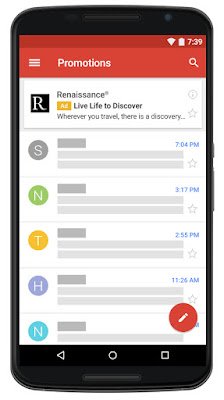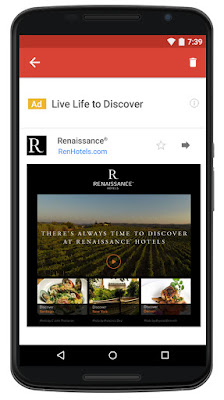Native Gmail ads arrive to AdWords
Google has now made it possible to target customers with ads directly in their inboxes via Gmail ads.
Google says that they’ve tested various formats to see what users find most engaging. One improvement they’ve made is to remove standard text ads from Gmail and show fewer, higher-quality native ads that “integrate more seamlessly with the inbox experience.”
Advertisers can manage native Gmail ads right in AdWords by setting up a Display Network campaign and creating a Gmail ads format in the Ad gallery. The ad has two main parts:
- The collapsed ad that users initially see that matches the look and feel of the Gmail inbox. Users can click on this to expand it and get more details.
- The expanded ad unit is triggered by a click on the collapsed ad. This is a full-page native ad that recreates the informational and visual richness of a landing page. After users click to expand, any subsequent clicks on your content are free, including clicks to save the ad to your inbox or forward it to others.


Advertisers can choose from several customizable Gmail ads templates for the expanded ad unit. They can feature a single image, highlight a promotion that combines an image with a description and call-to-action button, or showcase multiple products at once. The custom HTML format offers the greatest amount of flexibility in how you configure your assets and allows you to create an even richer ad experience by including videos, forms, phone numbers, and multiple links and calls-to-action.
As Gmail ads have evolved, we’ve continued to give users the ability to actively control the types of ads they see. As with other Google ads, users can manage their ad settings to remove unwanted ads from specific advertisers. They can also opt out of interest-based ads entirely.Source: Omry Pruzan, Senior Product Manager, Gmail ads



